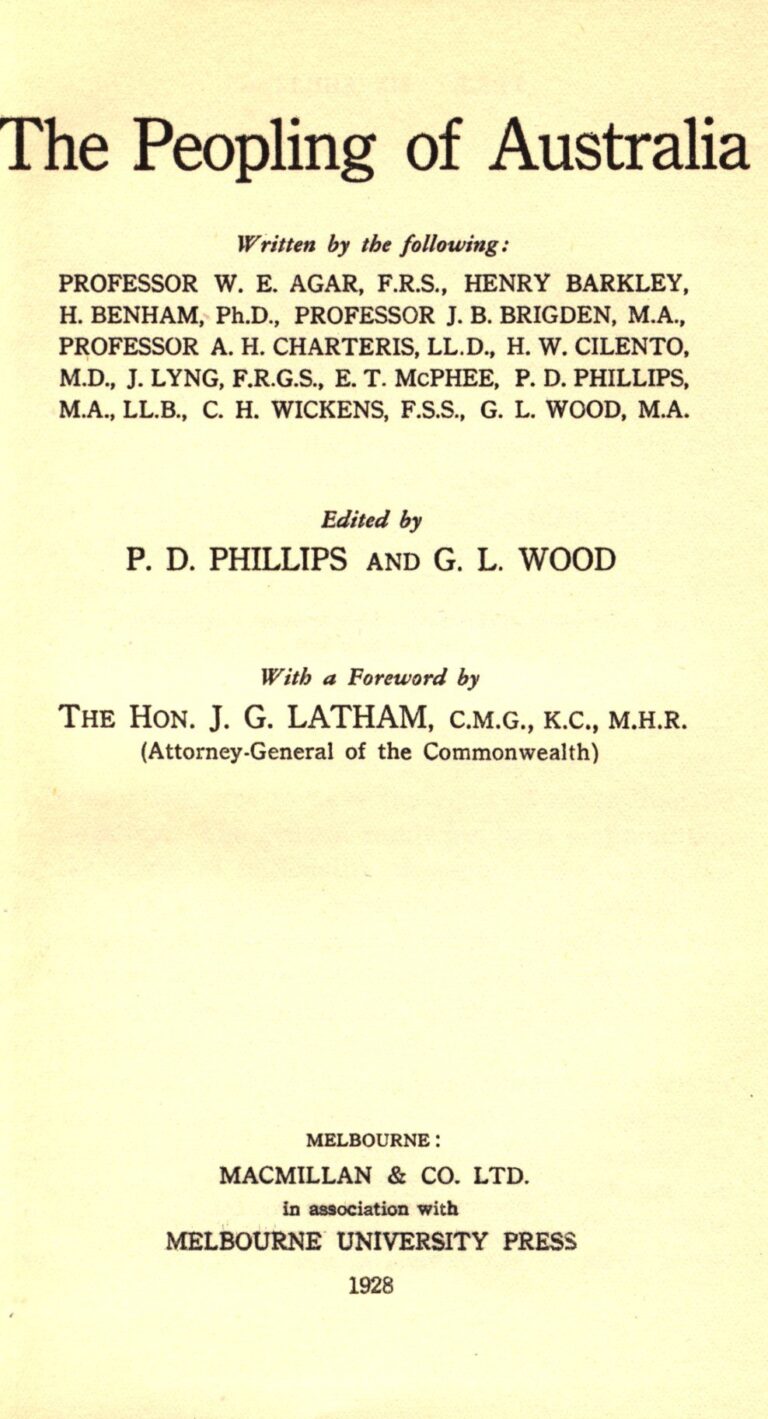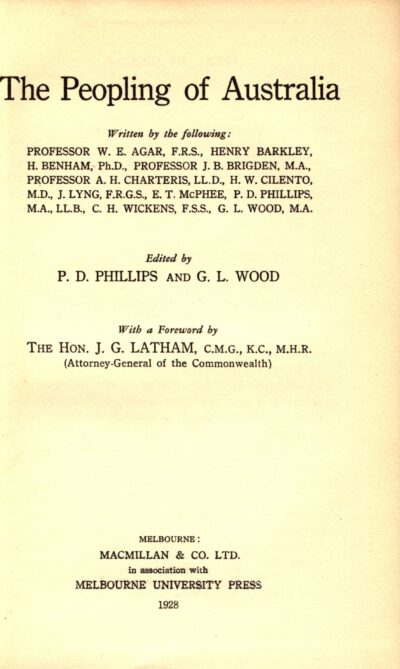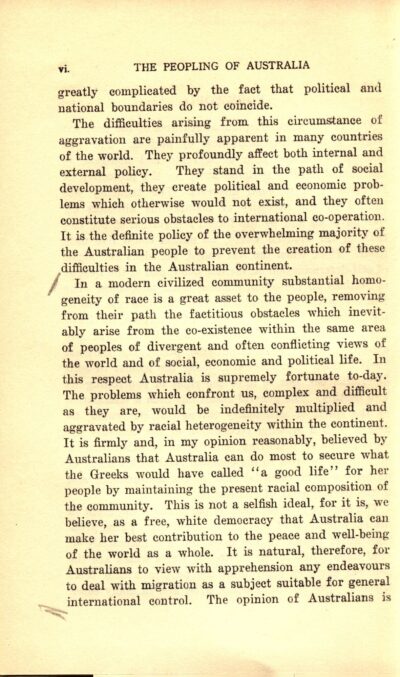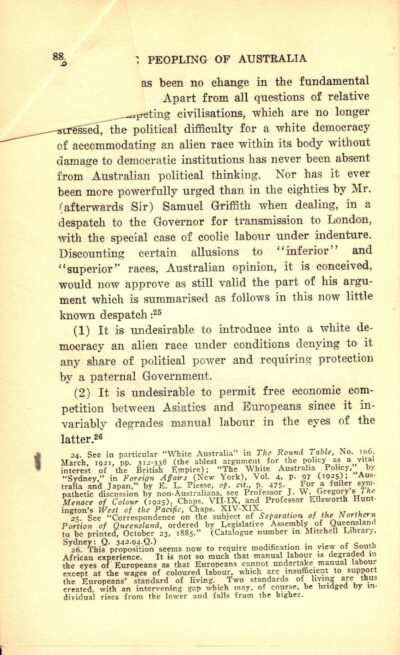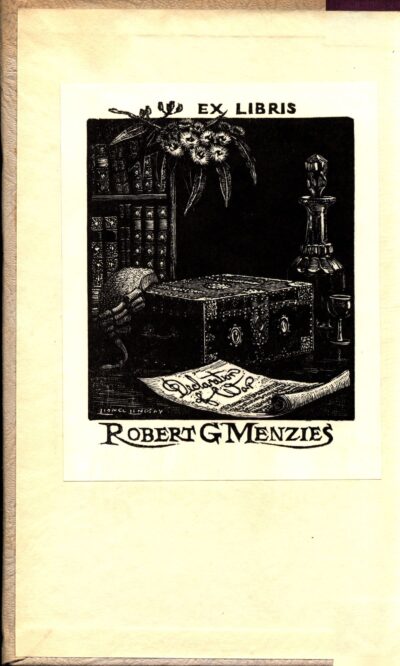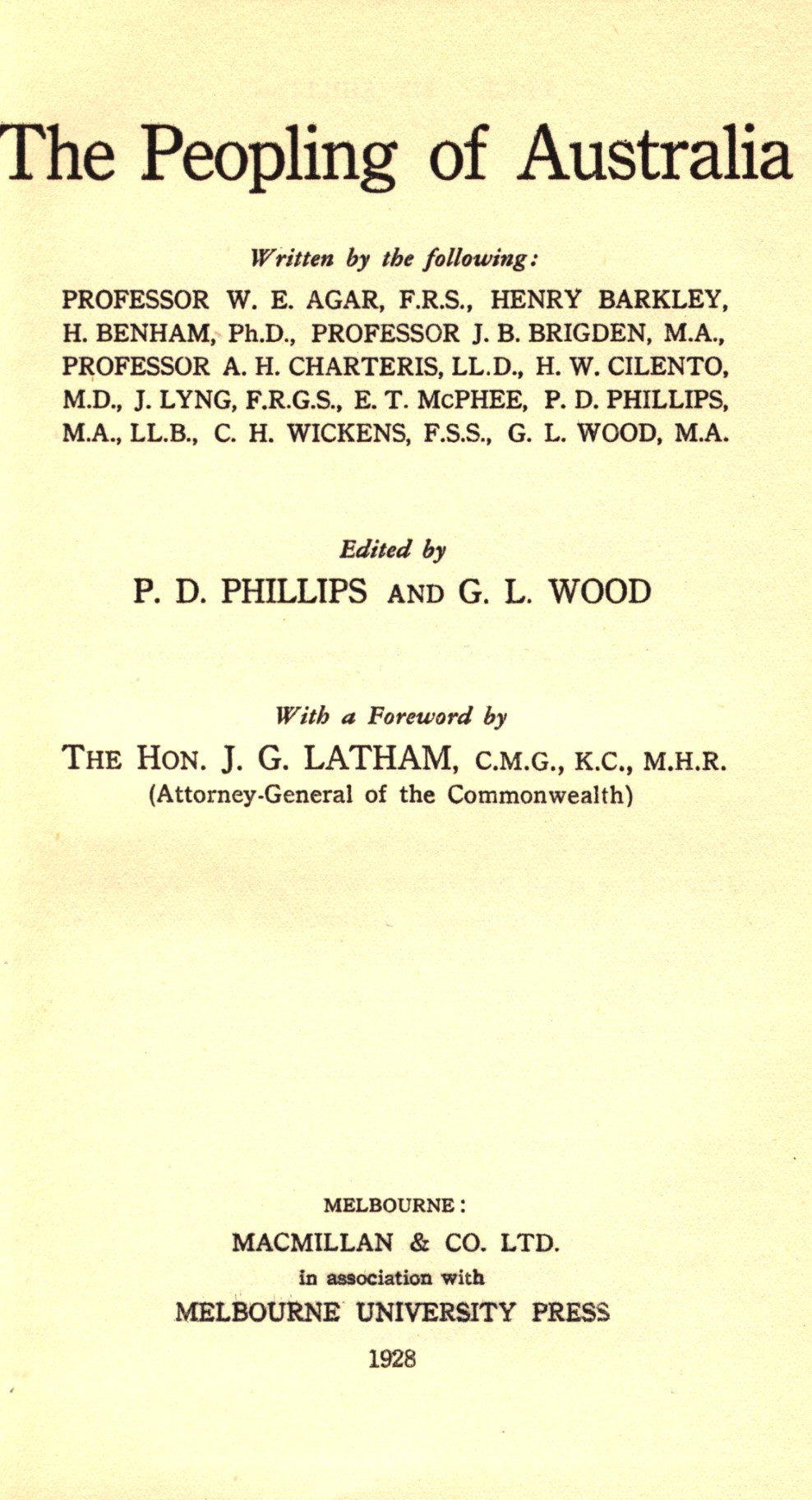P.D. Philips & G.L. Wood, The Peopling of Australia (1928)
Immigration has been an integral part of the Australian story since 1788. While it has overwhelmingly been a positive force which has done much to create the nation we know, it has often involved controversies and difficulties to be overcome. Debates about whether extensive immigration intakes risk social harmony, undercut wages, or drive-up property prices have been raging since the 19th century, and in recent times have once again risen to prominence. However, in the early 20th century the impetus to ‘populate or perish’ combined with the restrictions of the White Australia Policy, meant that immigration posed an altogether different problem for policy makers: how to attract migrants and settle them on the land.
The Peopling of Australia is an artefact of an age before the great era of post WW2 immigration, when under Chifley and Menzies Australia would first open its doors to continental Europeans. Instead, in the 1920s it barred its doors to the vast majority of people who were not from the British Isles by means of the infamous dictation test. When virtually only the British were allowed in, the government’s main task was less controlling an inpouring of migrants, than it was spending great time, energy and money convincing people to come at all. With these issues in mind, the book brings together leading academics from the Universities of Melbourne, Sydney and Tasmania, government statisticians, and horrifically even a ‘Professor of Zoology’ posing as a eugenicist, to tackle the task of populating Australia with British migrants and provide them with jobs.
The foreword, written by then Federal Attorney General and Menzies’s predecessor as the Member for Kooyong John Latham, introduces the book and justifies a racially discriminatory migration policy in the following terms:
‘In a modern civilized community substantial homogeneity of race is a great asset to the people, removing from their path the factitious obstacles which inevitably arise from the co-existence within the same area of peoples of divergent and often conflicting views of the world and of social, economic and political life. In this respect Australia is supremely fortunate to-day. The problems which confront us, complex and difficult as they are, would be indefinitely multiplied and aggravated by racial heterogeneity within the continent. It is firmly and, in my opinion reasonably, believed by Australians that Australia can do most to secure what the Greeks would have called “a good life” for her people by maintaining the present racial composition of the community. This is not a selfish ideal, for it is, we believe, as a free, white democracy that Australia can make her best contribution to the peace and well-being of the world as a whole. It is natural, therefore, for Australians to view with apprehension any endeavours to deal with migration as a subject suitable for general international control. The opinion of Australians is that migration problems, in present conditions, are better handled by the States directly concerned in any particular question that may arise than by any international organization.
Population problems have many aspects other than that of migration. This book admirably illustrates the diversity of the subject. The study of the relevant material requires the services of the statistician, the publicist, the economist, the ethnologist, the biologist, the geographer, and the climatologist. I congratulate the editors of this book and the contributors to it upon the service which they have rendered by their frank and capable studies. Skilled investigation of this subject must be the foundation of wise policy, and I am sure that the collaboration of the well-known Australians which has produced this book will be welcomed, not only in Australia but also in other countries, by the increasing number of men and women who recognize the profound importance of the questions of national and international policy with which they deal.’
It was the cataclysm of World War Two which finally made Australia begin to abandon its racially discriminatory migration system, with Menzies being one of the first to call for its alteration. In April 1943 he argued:
‘The greatest guarantee, not only of the safety of Australia but of its future material prosperity, would be a population of at least twenty million. If we are to rely on natural increase, this goal cannot be achieved for a century or two – and with our present population we may not hope to last so long as an independent people. The inevitable deduction from this is that we must have a positive, active and vigorous encouragement of migration. Yet, if you turn your minds back you will recall that for fifteen years before this war there was an attitude of mild hostility on migration into Australia. Are we proposing to resume this outlook when the war is over? Are we going to be timid about the temporary effect, social and industrial, of large migration, or are we to see in it a real source of strength? It is curious that a race so mixed as our own, which derives its strength and resilience from its mixture of English, Irish, Scots, Welsh, Cornish and, going back further, the Celt, the Angle, the Saxon, the Norman, should have become recently so sensitive about the purity of its blood.’
In office, Menzies would go on to oversee great numbers of non-British migrants welcomed as ‘new Australians’, abolish the dictation test, and open the door to Asian exchange students via the Colombo Plan. Nevertheless, elements of the White Australia Policy would remain in place through to his retirement as Prime Minister. The Peopling of Australia helps to provide context both for the gravity of the reforms he ushered in and why he did not go further – in 1928 Australia was an extraordinarily long way from the multicultural nation it would become.
You might also like...
Sign up to our newsletter
Sign up for our monthly newsletter to hear the latest news and receive information about upcoming events.

